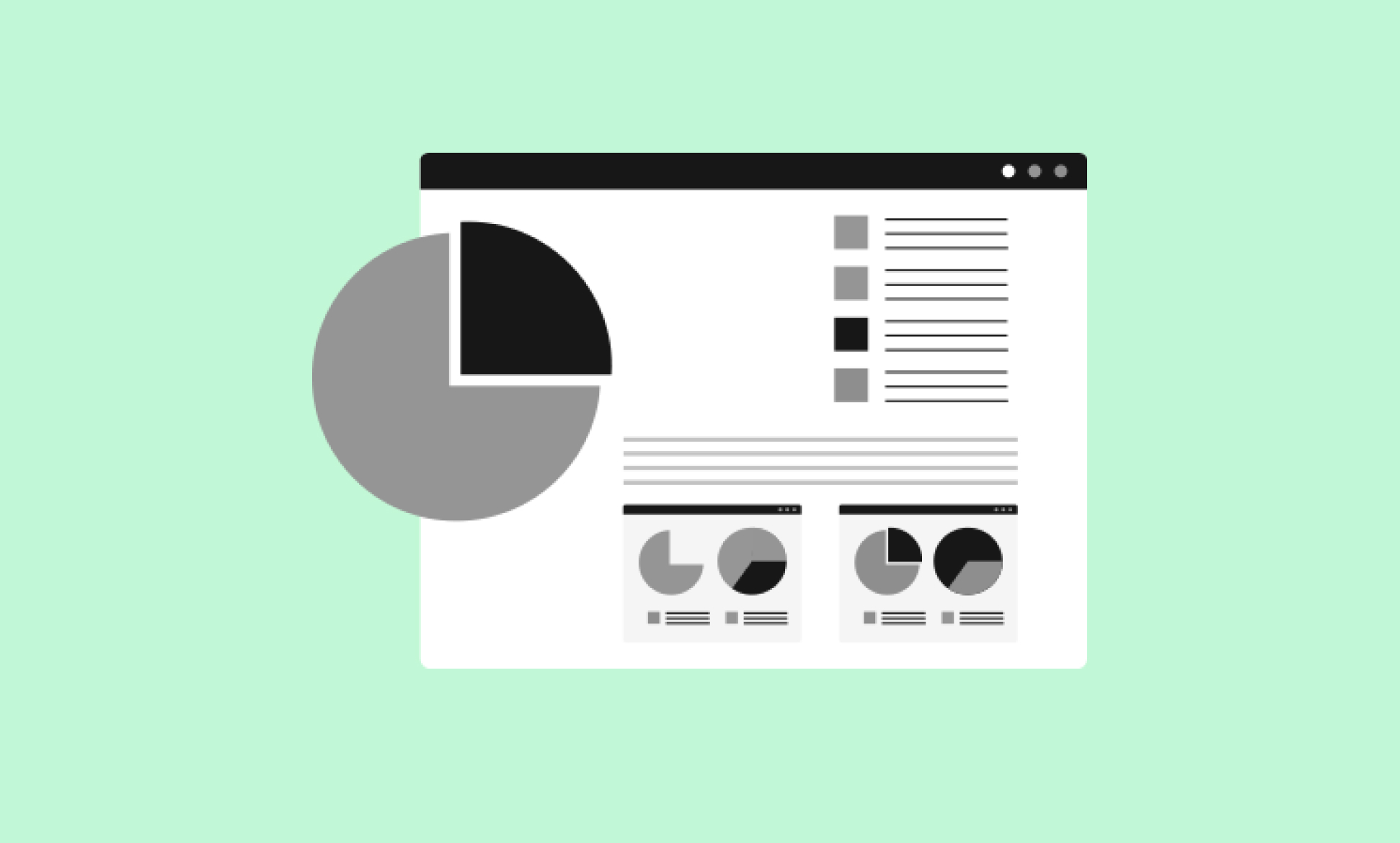As with any marketing activity, we as marketers want to answer the question: Where did that user/visitor/listener/customer come from?
This is known as attribution. What channel or medium can we attribute that user/visitor/listener/customer to? Having this knowledge gives us a lot of power. We can uncover what tactics are performing well and which aren’t, and invest accordingly. It also gives us great data to send to the rest of the marketing team and leadership.
But over the years, attribution has become quite difficult in some mediums. As we know, there’s no linear path that a customer takes, their path looks more like a pinball getting bounced around a pinball machine. Chaotic and sometimes, pretty unmeasurable.
And today we’re going to be talking about one medium’s attribution in particular and that’s podcast attribution.
What is podcast attribution?
You can think of podcast attribution in two ways:
- The first is discovering where your listeners are coming from. So basically, what podcast marketing initiatives are driving growth.
- The second is attributing your podcast to conversions or engagements in other areas. For example, how many leads did your podcast drive to your business?
Why is podcast attribution hard to measure?
Without getting too technical, podcast attribution is challenging to measure since listener data is fragmented across different platforms, apps, and devices.
When you think of web analytics, a visitor is coming to your website. A place where behaviors and engagement are closely tracked. But for podcasts, a listener is going to Spotify or Apple Podcasts, or another listening platform.
Additionally, podcast listeners are likely not clicking on the trackable links you’ve shared in your episode content. Instead, it’s common for a listener to maybe hear about your brand and they research you on their own time. Because of this, it’s difficult to accurately isolate the influence of podcast content on your brand or other marketing initiatives.
Chartable shutting down - search keywords
I can’t write about podcast attribution without discussing the closure of Chartable, a beloved podcast measurement platform.
Since its debut in 2018, Chartable has been pivotal in the podcast attribution and measurement space. It’s released some game-changing features such as:
- SmartLinks: The ability to track where your podcast downloads are coming from (e.g. social media, newsletters, guest promotion, etc.).
- SmartPromos: The ability to track podcast-to-podcast attribution (e.g. you advertised your podcast on another podcast and can track how many downloads that podcast drove to yours).
- Chart Rankings: The ability to track your podcast’s ranking across hundreds of charts including both Apple and Chartable charts.
And this past September 27th, it was officially announced that Chartable was shutting down. The news came as a surprise to some but others in the space felt it coming after Spotify acquired Chartable in February 2022. Along with the fact that the space has become more competitive, different tools and platforms continue to release solutions that go head-to-head with Chartable.
So in this article, we’ll be chatting about podcast attribution and along the way, be offering Chartable alternatives if you were an existing user now searching for new solutions.
Let’s get into it.
Attributing where podcast listeners are coming from
First, let’s look at attributing where podcast listeners are coming from.
Tracking links
For Chartable, this feature was called SmartPromos. Luckily, since the feature’s launch in 2019, many similar tools have come to market.
Podcast tracking links give you the ability to promote your podcast across marketing channels such as social media, newsletters, blogs, guest networks, etc., and then measure how many users from each channel clicked on your podcast and downloaded an episode.
This is amazing information for any podcaster to know. It tells you where your listeners live and what marketing channels result in download growth. With this knowledge, you can better invest time and resources into high-performing channels while thinking of new strategies for the underperforming or dropping them altogether.
Tracking links work by generating a shareable link for your episode or show and typically, this link almost looks like a Linktree and when a listener clicks, they can choose their preferred listening app (Spotify, Apple Podcasts, Pocket Casts, etc.).
But each tracking link platform looks slightly different, so let’s review a few.

CoHost Tracking Links
We’ll preface, this is our own solution. We built CoHost Tracking Links because we were frustrated with having to create different links for different marketing channels and not having as in-depth analytics as we needed.
Users can easily generate a tracking link for their entire podcast or individual episode, driving visitors to whichever listening app they prefer through a customizable landing page.
From here, users will see what marketing channels are driving downloads and gather insights on what content audiences prefer across platforms.

podfollow
Another podcast tracking link tool, podfollow automatically redirects users to a listening app based on their phone, e.g. iOS users will be sent to Apple Podcasts and Android users to Spotify.
For some podcasters, this is simple and convenient. For others, they like to allow the user to choose the platform they want to listen from (although it requires another step in their process). Similar to both CoHost and Chartable, podfollow users can customize the landing page when a user clicks on the link from social media.

Plink
And finally, Plink. Similar to podfollow above, Plink will also automatically redirect users to a listening app depending on whether they're using iOS, Android, or other mobile or smartwatch devices.
With a customizable landing page, users can flip between “Podcast” and “Episode” tabs to explore what type of content they’re looking to listen to.
Podcast-to-podcast attribution
The next avenue for tracking where your listeners are coming from might be podcast-to-podcast attribution.
Known as SmartPromos by Chartable, this type of attribution allows you to uncover how many downloads came from a podcast that you’ve promoted your own show on.
This is a growing tactic in the podcast marketing realm, advertising your show on other shows with similar audiences ensures that you’re tapping into a listener base that already engages with podcasts.

One alternative includes Magellan AI’s pod-to-pod attribution which allows you to track listener growth by logging and analyzing campaign conversions. The platform reports on downloads, unique listeners, and listener conversion rates.
Users can also uncover repeat listeners, differentiating one-time and repeat audiences.
Surveys
And finally, good old-fashioned surveys. Simply ask audience questions like:
- How they discovered your podcast
- Where they typically hangout online
This gives you raw audience data which truly, nothing can beat. We typically recommend adding a survey link to your show notes and then a CTA encouraging listeners to fill it out during the podcast episode. Of course, this method works best when you have an engaged audience base that’s willing to fill it out.
You can also incentivize the survey to give your listeners something in exchange for them offering their time and insights.
Attributing your podcast as a source
Now let’s look at the flip side. Measuring your podcast's performance as a marketing channel for driving leads, conversions, engagement, and other success metrics is not easy.
It’s hard to know when an audience member listened to a podcast episode and from there, went to your website and started a free trial because there’s no trace there, not even a breadcrumb trail.
And for some brands, that’s okay. They recognize that attribution isn’t clean and there are a lot of “dark” areas of marketing where you can’t see the exact source of a lead. But with that being said, there are still things you can put in place to gain a better insight into a podcast’s performance.
Let’s take a look at a few:
Advertising pixels

Magellan AI
Magellan AI offers campaign attribution for the podcast and audio sector. With their pixel tracking, advertisers can capture visitor event activity through IP addresses. Brands can even measure app installs or in-app events by integrating Magellan AI with their existing mobile measurement partner.

Spotify Ad Analytics
Spotify has their free Spotify Ad Analytics service. Advertisers can evaluate KPIs such as ad recall, awareness, and consideration. They also have the Spotify Pixel which provides conversion tracking and attribution across all Spotify ad formats for music and podcasts.
Discount codes
This isn’t a relevant strategy for all brands but can be effective for some.
I’m going to assume you’ve listened to a podcast before. And going a step further, I’m going to assume you’ve listened to a podcast with an ad in it before.
What do we know about podcast ads? They always will say use code “XX” for “X%” off or “free samples”, whatever the offer may be.
This doesn’t only entice a listener to try the product but it’s also letting the company know which customers came through the podcast.
“Where did you hear about us” forms
When a lead or customer converts on your site by signing up for a trial or demo, asking a simple, “Where did you hear about us” is a great way to get to the bottom of attribution.
In these forms, you can either leave it open-ended or have a drop-down list with your podcast or podcasts you advertise being options to select. Open-ended fields can be great to gather more audience insight but it does require extra effort for users which some brands prefer to avoid.
Moving forward with measuring podcast attribution
Podcast attribution is undoubtedly a challenge, but it's a crucial part of understanding not only what marketing tactics are growing your show but also the impact of your podcast on the customer journey.
By utilizing tools like tracking links, podcast-to-podcast attribution, surveys, and discount codes, you can start to piece together the story of where your listeners are coming from and how your podcast drives conversions.
While the journey may not always be clear-cut, these strategies can help bring valuable insights and ensure your podcast efforts are making a measurable difference.
If you have any questions about podcast attribution or Chartable alternatives, reach out to our team of experts!











